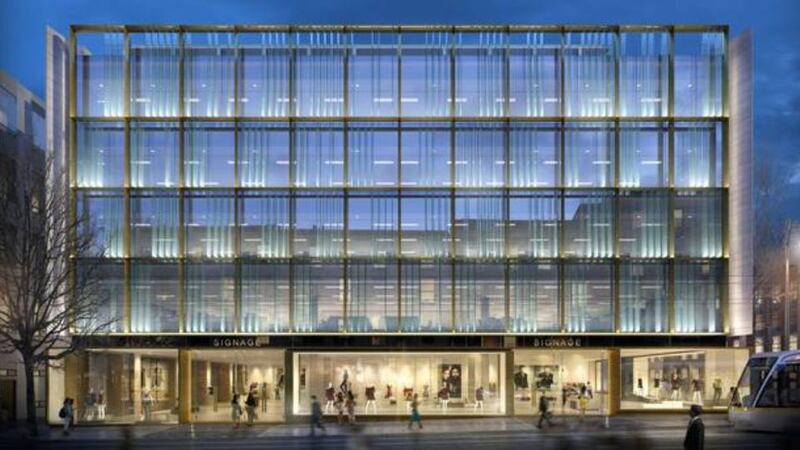Brexit and its implications for the Dublin office market was the talk of the town in property circles in the aftermath of the UK’s vote to leave the EU in June 2016.
There were predictions that thousands of well-paid financial jobs, as well as the legal services supporting them, would relocate from London to Dublin. Given Dublin’s low office vacancy rates and rents at boom-era peeks, it was feared that a wave of new arrivals with big wallets could wind up inflating the market further and banishing the natives to the outer suburbs.
What has happened since 2016 is more complex.
“According to the IDA, there have been about 55 Brexit-related job announcements to date with about 4,500 jobs created,” says Marie Hunt, executive director and head of research at CBRE. “This is less than what might have been envisaged so, while Brexit has provided an extra welcome layer of demand, it is by no means the primary driver of activity in the Dublin office market.”

Big Transfers
Nevertheless, there have been some big Brexit-related lettings. Bank of America, for example, has merged its former main EU bank in London with its Dublin operation. This has resulted in about 800 new jobs, split between Leopardstown and Hatch Street in the city centre. UK banking giant Barclays has also established its main EU banking subsidiary in Dublin where it is renting 3,437sq m (37,000sq ft) at One Molesworth Street.
Big insurance firms, such as Aviva and Phoenix Life, have transferred large parts (about £30 billion in assets) of their business to Dublin. UK-based asset managers have transferred more than £65 billion in funds to Dublin and UK-based banks are moving about £800 billion (€934 billion) in assets – nearly 10 per cent of the entire UK banking system – to the EU.

Hannah Dwyer, director and head of research at JLL, says that the transfer of money and assets under management to Dublin is “particularly interesting” and this leakage from London has been “quite significant” in the last 24 months. “In the longer-term, this is where we expect to see additional job creation and wealth in Dublin as a result of Brexit,” says Dwyer.
Small Transfers
There has also been a lot of smaller UK-based companies setting up operations in Dublin to service their European business post-Brexit. These include EquiLend, which services the securities industry, and Optal, one of Europe’s fastest-growing fintechs. One letting agent for a suburban office scheme told me he’s getting so many enquiries from smaller UK firms that he now passes them on to a shared/short-term office provider in the same scheme.
Most estate agents say many firms which are planning to exit the UK already have a presence in Dublin. They are taking small amounts of additional short-term office space in co-working/shared office environments, setting up their operations and waiting to see what way Brexit will go. Once the nature of Brexit becomes apparent – deal or no deal, hard or soft – these companies will then firm up their future plans for Dublin. “The co-working sector is likely to be a beneficiary of Brexit-related moves,” says Hunt.
Some UK-based companies may conceal Brexit-related expansion in their Irish operations as just 'normal' expansion in order to avoid a backlash
Keith O’Neill, executive director at BNP Paribas Real Estate, says most Brexit-related office requirements in Dublin are for 929-2,398sq m (10,000-25,000sq ft) of space in the central business district and that rents – up to €753.50 per sq m (€70 per sq ft) – are no hindrance. “The Dublin market can easily handle this level of activity,” he says. “There is no great excitement among agents about a possible surge in companies coming over. But some UK-based companies may conceal Brexit-related expansion in their Irish operations as just ‘normal’ expansion in order to avoid a backlash in the UK.”
However, Ms Dwyer says vacancy rates remain tight in Dublin, particularly in core locations, and pipeline supply is also limited with 51 per cent of the 4.3 million sq ft of office space under construction or being refurbished either let or reserved to a tenant.
Claire Solon, head of property at institutional landlord Friends First, expects Dublin's docklands to host the largest number of Brexit-related occupiers but "this is more to do with where the largest potential supply of modern office space will be located, rather than geographical preference". She says high city centre rents "may mean" that Brexit-related occupiers will move to the suburban market.
Dublin Airport Central

One of the likely suburban schemes to benefit from this is Dublin Airport Central which is being developed on a 70-acre site beside the terminal buildings. Paul Byrne, head of sales and marketing at Dublin Airport Central, has walked “lots of potential Brexit-related clients” around the office park and these are “pleasantly surprised” at the standard of buildings. “They are also attracted by the competitive rents of about €375 per sq m – considerably less than the city centre – but you just can’t beat our connectivity. We’re minutes walk from the airport and a few minutes drive from the M50 and M1.”
Two new office blocks with about 200,000sq ft are due for completion at Dublin Airport in the third quarter of this year and there is planning permission for another 220,000sq ft of office space. This is likely to come on stream over the next 18 to 24 months.
With so many Brexit-related companies in Dublin and even more looking at setting up operations here, it will be very interesting to observe what happens to their Irish operations after Brexit. Afterall, Facebook set up a Dublin office in 2008 with 250 employees and by 2022 could have 7,000 working on its 870,000sq ft campus being developed opposite the RDS.












